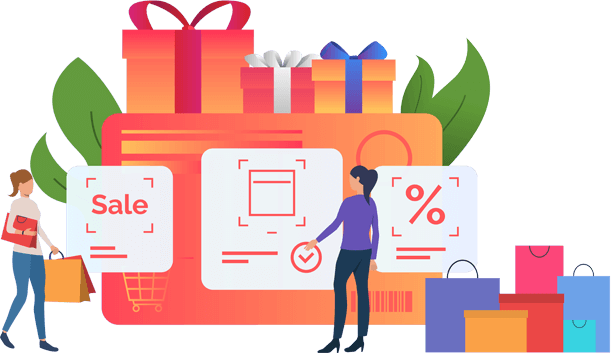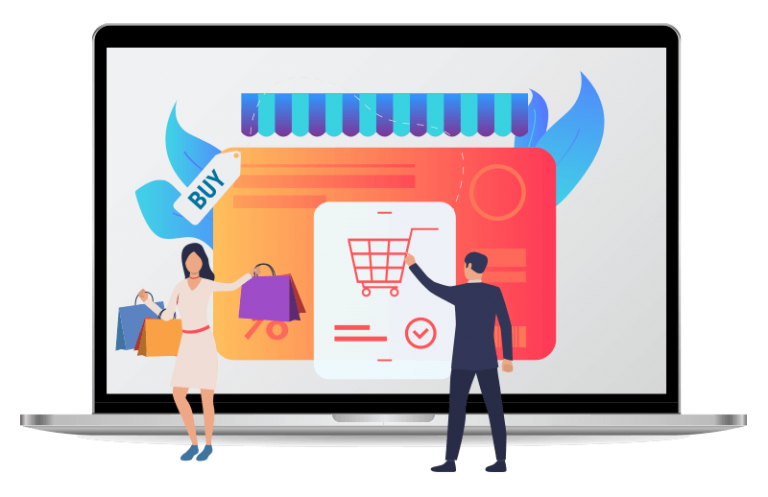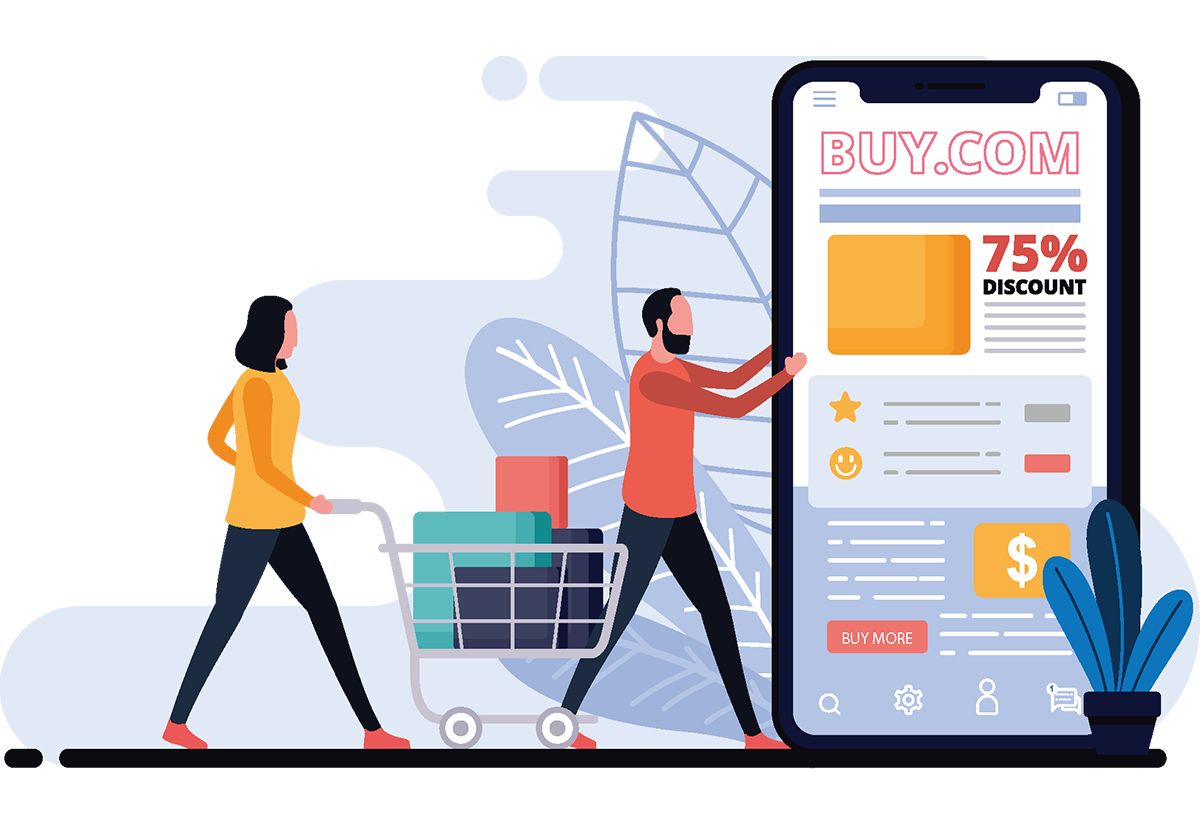
We know how to funnel online shoppers from the home page right through to the check out page without leaving your website. Known as shopping cart abandonment we eliminate this by reducing the number of steps and hurdles in front of the potential customer during their shopping experience.
If you are ready to launch into the online world of eCommerce please get in touch with us today

Our sites are affordable so all businesses can now afford to be online with their own eCommerce website
We give you the choice of building your new eCommerce website on very simple to use WordPress, Magento or Joomla platforms
All our eCommerce sites seamlessly integrate with the latest payment gateways. Plus they are extremely secure.
Sell your products quickly and boost revenues by getting SODESIGN to implement an SEO campaign. We know how to out perform your competition
Engage with a wider mobile audience with a fully responsive eCommerce website
Our team of expert web designers know how to create sites that will give your business the competitive edge needed to out perform your competitors

| 1 Year Domain , Hosting , Email FREE ! |
| 5 Email IDs |
| 5 GB Space |
| Order details by email |
| 10 Product Categories |
| 200 Product images |
| 200 Product options |
| Slideshow & Banners management |
| Coupons & Discounts features |
| SEO Friendly |
| Responsive websites |
| COD / Debit, Credit, Net Banking |
| Live chat Support |
| No hidden charges / one time feee |
| 50% advance to get started |
| 1 Year Domain , Hosting , Email FREE ! |
| 20 Email IDs |
| 15 GB Space |
| Order details by email |
| Unlimited Categories |
| 500 Product images |
| 500 Product options |
| Slideshow & Banners management |
| Coupons & Discounts features |
| SEO Friendly |
| Responsive websites |
| COD / Debit, Credit, Net Banking |
| Live chat Support |
| No hidden charges / one time feee |
| 50% advance to get started |
| Payumoney transfers |
| 1 Year Domain , Hosting , Email FREE ! |
| Unlimited Email IDs |
| 30 GB Space |
| Order details by email |
| Unlimited Product Categories |
| Unlimited Product images |
| Unlimited Product options |
| Slideshow & Banners management |
| Coupons & Discounts features |
| SEO Friendly |
| Responsive websites |
| COD / Debit, Credit, Net Banking |
| Live chat Support |
| No hidden charges / one time feee |
| 50% advance to get started |
| Payumoney transfers |
| Google Adwords Free Worth Rs,2000 |

1. Domain with HTTPs
An ecommerce site must have a top level domain with a secured connection. If your site exclusively serves a certain country, then use a country code domain.
2. Business logo
Place your business logo at a prominent position of the header. Preferably near the left.
3. User-friendly navigation
A clear navigation bar improves the UX of your site – mandatory for every page.
4. Wishlist
Sometimes, a customer may be interested in a product but decide to buy it later. Or a customer may find a product interesting and want to check that later for more details. A wishlist allows them to store a list of these products so that they can easily find them next time they visit your site.
5. Customer login
Your site should definitely let the customers register and login. It’s best to place this on the top bar for easy access.
6. Store finder
If your ecommerce site has physical stores or pick-up points, a store locator at the top bar can make them easy for your customers to find.
7. Language options
If your ecommerce site has multiple versions for different regions, then you can include language options to let users switch between different languages/regions.
8. Shopping cart
Obviously, the shopping cart is an integral part of any ecommerce site. The best position to place it is the upper right corner.
9. Search bar
If you optimise your search bar properly, it can become a powerful tool for conversions.
10. Phone number
Whether it be enquiring about a particular product or clarifying business hours, customers may need to call you for various reasons. Mentioning the contact number at the top makes this easy for them.
11. Personalised items
You can show potential customers items based on their search or purchasing history. This is a very effective way to increase sales.
12. Text content
Including some description about your business is important from an SEO perspective. Also, a potential new customer will be able to quickly know about you from this.
13. FAQ, returns and exchanges, store locator, shipping information, order tracking etc.
These pages are important for your customers. So provide links to them at the footer with a title, something like Customer care can be appropriate.
14. Contact us
It’s good to provide several ways to contact your business. Phone, email and inquiry form submission are three common ones.
15. Newsletter signup
As a modern ecommerce site, you should have a newsletter signup form that collects your customers’ email addresses. You can send them special offers and inform new product arrivals.
16. Payment system icons
It’s customary to include payment system icons at the bottom of the page. This lets your customers quickly know which payment systems you accept.
17. Social Media links
Providing links to your social media accounts at the bottom of the page lets your customers stay connected with your brand.
18. Link to about pages
Here you may include a link to your more detailed About us page including affiliate, press and career pages.
19. Terms and Conditions, Privacy Policy, Sitemap
These standard documents and the sitemap can be placed at the bottom of the page.
20. Live Chat
Live chat is common on many ecommerce sites nowadays. But to implement and maintain a proper live chat option requires careful planning and resources.
Product Category Page Features List
21. Consistent image size
The product images in a category page should have a consistent size. It’s not just about the resolution, they should have a similar amount of whitespace at the borders too.
22. Breadcrumb navigation
Breadcrumb navigation helps the visitors to easily browse through product categories. You can include it right below the main navigation bar.
23. Show the number of products displaying in the page
Generally, a page can’t show all the products that there are under a certain category. But every page should show the customers the total number of products and the range that they are viewing.
24. Product filtering and sorting
Product filtering allows customers to filter products based on different attributes. For example, a clothing store may use gender, size, colour etc. as its filtering options. The sorting allows viewing products on ascending or descending order of price and arrival.
Related article: 4 Things to Consider When Choosing a Web Design Company
25. Page description field
At this part, include a short general description of the category. This is mostly for the search engines.
Product Page Features List
26. Product title
This is simply the name of the product. The name of each product should definitely be unique, but maybe with different colours and sizes, if applicable.
27. Good quality of images with zoom in functionality
At the product pages, there should be high-quality images that can be zoomed in to view particular parts of the product.
28. Pricing information with potential sales or discounts
Apart from mentioning the product price, it’s a good idea to mention if there’s any discount or promotional offers. The common practice is to strike through the previous price and write the new price with the discount percentage in brackets.
29. A field to change purchase quantities
Just below the product price, there should be an option to change the product quantity. That way, the customers can easily select the number of items they want to buy.
30. Product variables (if necessary)
Some variables like colour and size of a physical product should be selectable right from the product page.
31. Add to cart button
The Add to Cart button should be prominently displayed beside the product image.
32. Trust signal around “Add to Cart” button
It’s a very good idea to mention a few trust signals near the add to cart button. This influences the subconscious of the customers on making the purchasing decision.
33. Add to Wish List and Compare button on each product page
Wish list enables the customers to store a product if they want to buy that later. A compare feature can also be very useful for them.
34. Social share buttons for each ecommerce product
Let your customers share their favourite products. Adding social share (and send link via email) buttons is a really great way to reach more people.
35. Product description
Product descriptions and specifications are absolutely essential parts of the page. Try to include all the essential information a customer may look for.
36. Consumer reviews on products
This part will let the customers read, rate and give reviews to products. As we have shown, the average rating and number of reviews should also be shown right below the product name above.
37. Related products
Include a list of related products at the bottom of the page. This may prompt the customer to find the product that he/she wants.
Customer Checkout, Shopping Cart and Wishlist
38. Accept all payment methods
Your ecommerce site should accept most of the payment methods that are popular among your customers.
39. Cart details
Mention all details regarding what the customer has in the cart. It should definitely the product name, price and quantity of individual products.
40. Shipping method (offer low shipping cost)
Your customers will find multiple shipping options very convenient. There should be at least one low-cost shipping option.
41. Billing address and shipping address
It’s common to have two address fields. One for billing address and another for shipping address. For many customers these two are different.
42. Security seals
Show security seals near the field where the customers enter their credit card information. These security seals or trust badges help to convince your customers about the security of your site and the payment process.
43. Include an area to punch in promo codes
Your business may occasionally provide promo codes to customers. This field is where customers may apply the promo codes to get discounts or other privileges.
44. Have an option to change the quantity or remove items
Also, provide option to edit and remove items from the checkout page. Note that there should be an option to save the cart for placing the final order later.
45. Allow items to be saved for later
If for any reason a customer doesn’t want to go through the payment process at this stage, provide them with a way to store their cart in case they want to come back later.

A full reponsive website with Shopping Shopping cart and registration form . Online payment gateway and Taxes available on all packages.